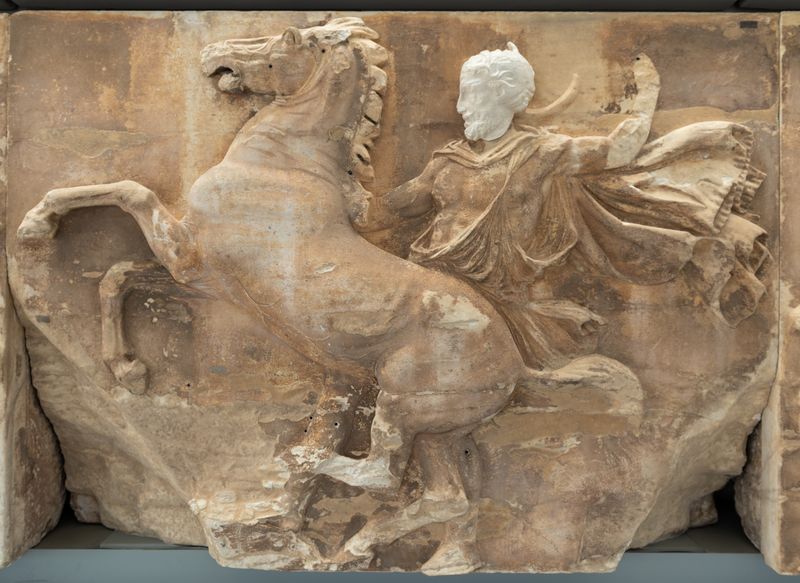Western frieze of the Parthenon, Acropolis of Athens. Block W VIII, Figure 15. Western horseman with exomis (short cloak attached to one shoulder), a windswept chlamys (cloak) and elements of Thracian dress. 442-438 BC, probably by Pheidias, created in Pentelic marble. Acropolis Museum, Athens, inventory no. 20022. Height 1.01 m, width 1.395 m.
The marble sculptor Pheidias was the most important sculptor of the Greek classical period of the 5th century BC, a contemporary of Myron and Polyklet. His friend and statesman Pericles commissioned him to take part in advising and directing the building projects on the Acropolis.
On Block VIII, a bearded rider tries to rein in his spirited horse by resolutely pulling on the reins, which were once cast in bronze. To keep his balance, the rider leans firmly on a rock with his right foot, while the horse's resistance is evident from its swollen veins. The rider wears an exomis and over it a chlamys that flares out behind him in deep folds. The cap on his head is made of fox fur (alopeke), while on his feet he wears boots whose folded caps were also originally made of added bronze. His face is a copy of the original, which was lost between 1802 and 1870.
This block is distinguished by its original composition and skilful execution, which point to a creator of exceptionally high standards, perhaps Pheidias himself. The horseman is usually identified with one of the two Hipparchoi, commanders of the Athenian cavalry. Others consider him to be a Thracian ally of the Athenians, since his dress is typically Thracian, as is that of the bearded horseman on Block IV (Ακρ. 20018). Those who ascribe a mythological interpretation to the frieze consider the rider to be the mythical king of Athens, Theseus, who united the scattered settlements of Attica and founded the festival of the Panathenae.
(Excerpt from the exhibit description of the Acropolis Museum)
















